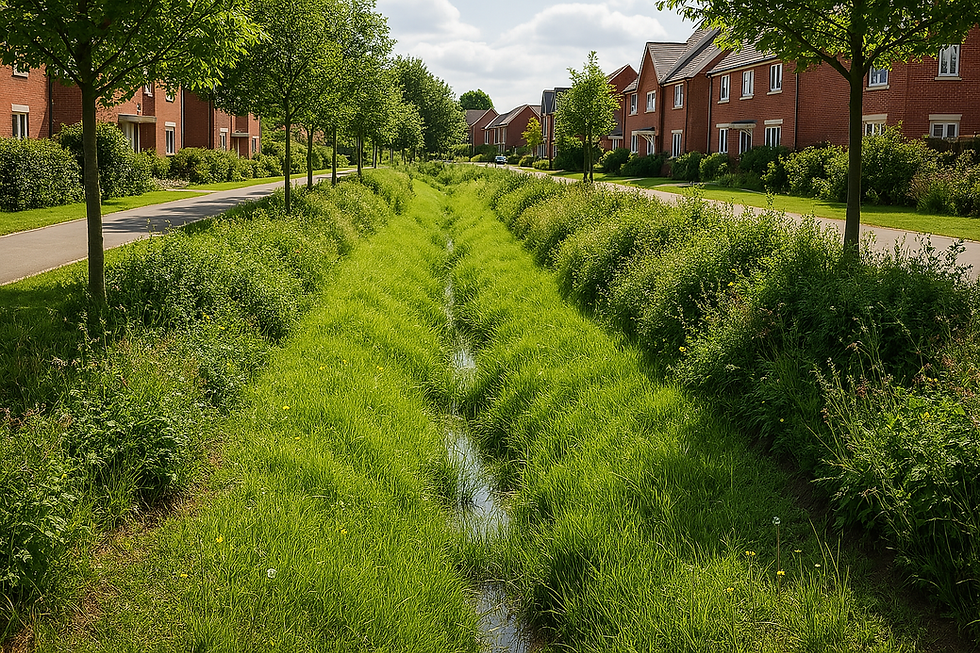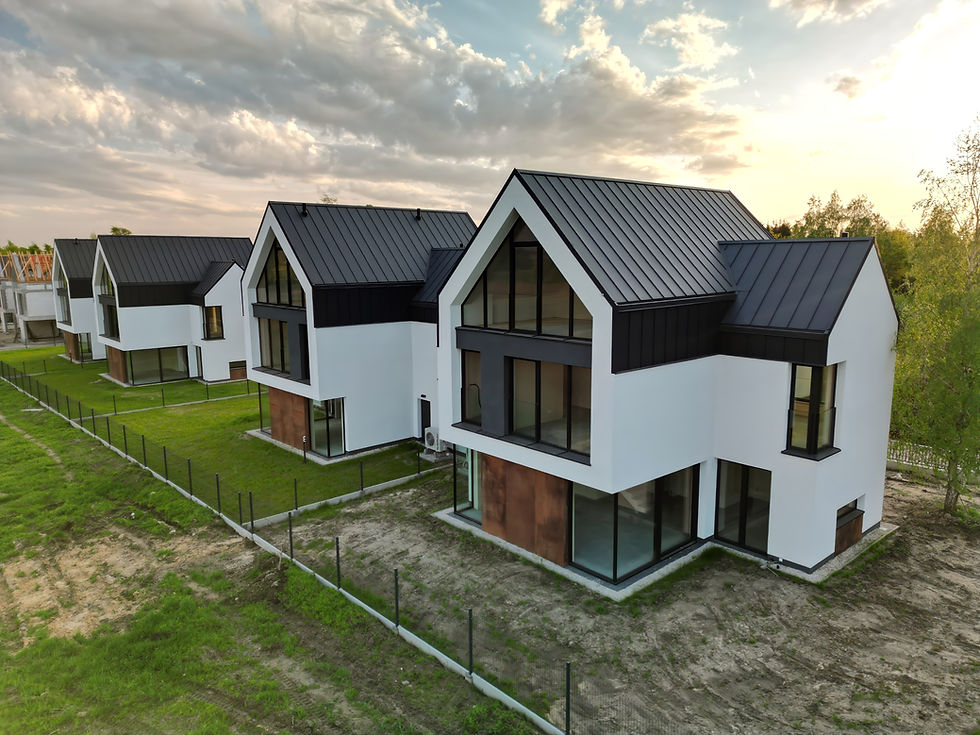Integrated Drainage Solutions
REFEA engineering teams designs climate-resilient drainage systems that support flood prevention, biodiversity, and long-term site value.
.png)
REFEA is a joint initiative by JMS Engineers and GC Robertson, promoting sustainability through smarter reuse and practical design in structural and civil engineering across Suffolk, Norfolk, Cambridgeshire, Essex and the wider East Anglia region.
SuDS-led civil engineering that manages water naturally and sustainably
REFEA designs climate-resilient drainage systems that support flood prevention, biodiversity, and long-term site value.
Our civil engineering team works across East Anglia to deliver Sustainable Urban Drainage Systems (SuDS) that are practical, adoptable, and designed to complement the built and natural environment.

Why Integrated Drainage Matters
Drainage isn’t just an infrastructure box to tick. It’s a fundamental part of delivering sustainable, resilient developments that work with nature - not against it.
REFEA’s drainage strategies help reduce surface water runoff, minimise the load on sewer networks, and create opportunities for ecological and amenity gains - all while meeting planning and adoption standards.
Our SuDS & Drainage Services Include:

SuDS strategies for planning applications

Infiltration testing and runoff assessments

Design of swales, ponds, basins, and rain gardens

Permeable paving and green roof drainage system

Section 104, 106 and 38 adoption submissions

Coordination with landscape and ecology teams

Retrofit SuDS for existing or urban sites
Practical, Planning-Ready Design
Our early-stage SuDS input is based on local policy, site constraints, and construction realities - helping you deliver strategies that satisfy both planners and contractors. From new developments to infill plots and phased schemes, we ensure drainage is considered from day one.
We assess the viability of retaining or repurposing existing structural elements, helping reduce demolition waste and embodied carbon.
We design integrated SuDS strategies that manage surface water naturally, reduce flood risk, and support biodiversity.
Our engineers design structures using low-carbon materials, optimised steel/concrete usage, and efficient detailing to minimise environmental impact.
We provide structural and civil input into retrofit schemes - ensuring existing assets can be adapted and extended rather than replaced.
We work alongside design teams to evaluate carbon impacts across the project lifecycle and propose meaningful reductions at the design stage.
Sustainable Design Services
Our civil and structural engineering services support low-carbon construction, resource efficiency, and long-term resilience.
Focus Areas
REFEA’s work is guided by six core principles that drive sustainable structural and civil engineering - turning practical design decisions into low-carbon outcomes across East Anglia.
Reuse First
Prioritising existing structures and materials to reduce waste and embodied carbon.

Early Design Collaboration
Involving engineers early to embed sustainability from concept to construction.

Low-Carbon Materials
Specifying materials with lower embodied carbon and designing for material efficiency.

Circular Design Thinking
Designing for adaptability, longevity, and future reuse from the outset.
%20Strategy%20(3)-min.png)
Integrated Drainage Solutions
Embedding SuDS into civil engineering for sustainable, climate-resilient developments.

Practical Sustainability
Delivering buildable, cost-conscious solutions that meet real environmental targets.

Sustainable
structures

east anglia
Good drainage design goes beyond compliance - it shapes how a site interacts with its surroundings. By integrating SuDS from the outset, we can reduce runoff, enhance biodiversity, and create places that work with water, not against it. REFEA's goal is to make sustainable drainage practical and buildable for every kind of development.
Ben Norman
Civil Engineer, JMS Engineers
Knowledge is key to sustainable change. Explore our latest insights and technical resources:
.png)
Path to a Low-Carbon Built Environment
The built environment contributes nearly 40% of global carbon emissions, much of it through construction and materials. In East Anglia, reducing embodied carbon is critical to meeting sustainability goals. By reusing structures, designing efficiently, and integrating low-impact civil solutions, we can reshape how the region builds - and lead the way towards a net zero future.










